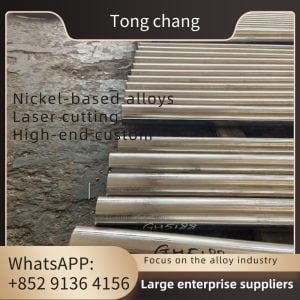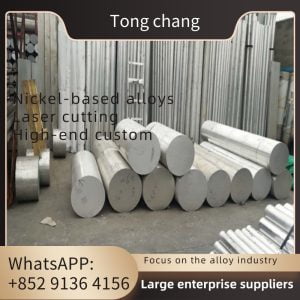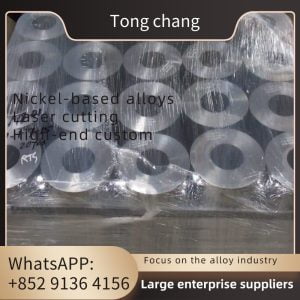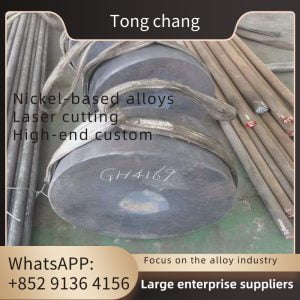| Material: | S31803 | Steel Grade: | Duplex Stainless Steel |
|---|---|---|---|
| Type: | Duplex | Welding Line Type: | Seamless |
| Packing: | Ply-wooden Case /Iron Case/ Bundle With Plastic Cap | Standard: | ASTM A790 |
ASTM A790 S31803 (2205, 1.4462) Duplex Stainless Steel Pipe
ASME SA789 / UNS 31803 corresponding to the national standard alloy duplex stainless steel S31803 duplex stainless steel pipe is a good resistance to chloride stress in the alloy duplex stainless steel. Medium alloy type – representative brand is UNS S31803(22Cr-5Ni-3Mo-0.15N); S31803 duplex steel pipe is the most widely used in three types of duplex steel (2205 duplex stainless steel pipe, 2507 duplex stainless steel pipe, S31803 duplex Stainless Steel).
S31803 is developed on the basis of SAF2205 in Sweden. It is the most common type of bidirectional steel in the world at present. It has resistance to the environment containing hydrogen, carbon dioxide and chloride, can be formed by cold and hot processing, and has good welding performance.
2205 (S31803, F51, 1.4462) duplex stainless steel corrosion resistance:
1. uniform corrosion: due to the chromium content of 2205 duplex steel (22%), molybdenum (3%) and nitrogen content (0.18%), the corrosion
resistance of 2205 is better than 316L and 317L in most environments.
2. Local corrosion resistance: the content of chromium, molybdenum and nitrogen in 2205 duplex steel makes it have strong resistance to point corrosion and gap corrosion in oxidizing and acidic solutions.
3. stress corrosion resistance: 2205 duplex steel duplex microstructure helps to improve the resistance to stress corrosion cracking ability of stainless steel. At a certain temperature, tension, oxygen and chloride presence, austenitic stainless steel will have chloride stress corrosion. Because these conditions are not easy to control, the use of 304L, 316L and 317L is limited in this regard.
4. corrosion fatigue resistance: 2205 duplex steel's high strength and corrosion resistance make it have a high corrosion fatigue strength. Processing equipment is susceptible to corrosive environments and loading cycles, and the 2205 features are ideal for such applications.
Chemical Composition
| Grade | C max | Si max | Mn max | P max | S max | Cr | Ni | Mo | N |
| UNS S32750 | 0.030 | 0.8 | 1.2 | 0.030 | 0.015 | 24.0-26.0 | 6.0-8.0 | 3.0-5.0 | 0.24-0.32 |
| UNS S31803 | 0.030 | 1.0 | 1.0 | 0.020 | 0.020 | 21.0-23.0 | 4.5-6.5 | 2.5-3.5 | 0.08-0.20 |
| UNS S31500 | 0.030 | 1.0 | 1.0 | 0.030 | 0.030 | 18.0-19.0 | 4.5-5.5 | 2.5-3.5 | 0.05-0.10 |
Physical Properties
| Grade | Y.S.MPa min | T.S.Mpa min | Elingation % | Hardness HRC |
| UNS S32750 | 550 | 800 | 15 | 20 |
| UNS S31803 | 450 | 620 | 25 | 20 |
| UNS S31500 | 440 | 630 | 30 | 20 |
2205 (S31803, F51, 1.4462) duplex stainless steel processing properties:
1. hot forming: We recommend that the forming should be as far as possible at 600°F temperature below. In the thermal forming process, the whole workpiece should be heated as a whole and should be carried out in the temperature range of 1750°F to 2250°F, 2205 duplex steel is very soft at this temperature. If the temperature is too high, 2205 duplex steel is prone to thermal tearing. If the temperature is lower than this, the austenite will fracture. Below 1700°F, due to the influence of temperature and deformation, the intermetallic phase quickly forms. Immediately after the thermoforming is completed, it should be annealed at a minimum temperature of 1900°F and quenched to restore its phase balance, toughness and corrosion resistance. We do not recommend stress relief, but if it must be done, the material should be annealed in solid solution at a minimum temperature of 1900°F and then quickly cooled for water quenching.
2. cold forming: 2205 duplex steel can be cut and cold forming. However, due to the high strength and hardness of 2205 duplex steel itself, it needs to be cold formed more than austenitic steel, and because of its high strength, the springback factor should be fully taken into account.
3. heat treatment: 2205 duplex steel should be annealed at a minimum temperature of 1900°F, and then quickly cooled for water quenching. This treatment is used for solid solution annealing and stress relief. Stress relief treatment, if performed at temperatures below 1900°F, tends to lead to the precipitation of harmful metallic or non-metallic phases.
4. mechanical machinability: On high-speed machine tools, the feed rate and cutting speed of 2205 duplex steel and 316L are the same. If the carbonized knife is used, the cutting speed is reduced by about 20% compared with 316L, and the performance of the machine equipment and its components plays a key role in this.
5. welding: 2205 alloy weldability is very good. The performance to be achieved by 2205 duplex steel is that the welding metal and the thermal deterioration part still maintain the same corrosion resistance, strength and toughness as the base metal. 2205 duplex steel welding is not difficult, but it is necessary to design its welding procedure, so that after welding, it can maintain a good phase balance state and avoid harmful metal phase or non-metal phase precipitation.
Application:
Production of oil well pipe
Chemical storage tank
Heat exchanger
Condensing cooler
Produce pitting corrosion and stress corrosion pressure equipment







